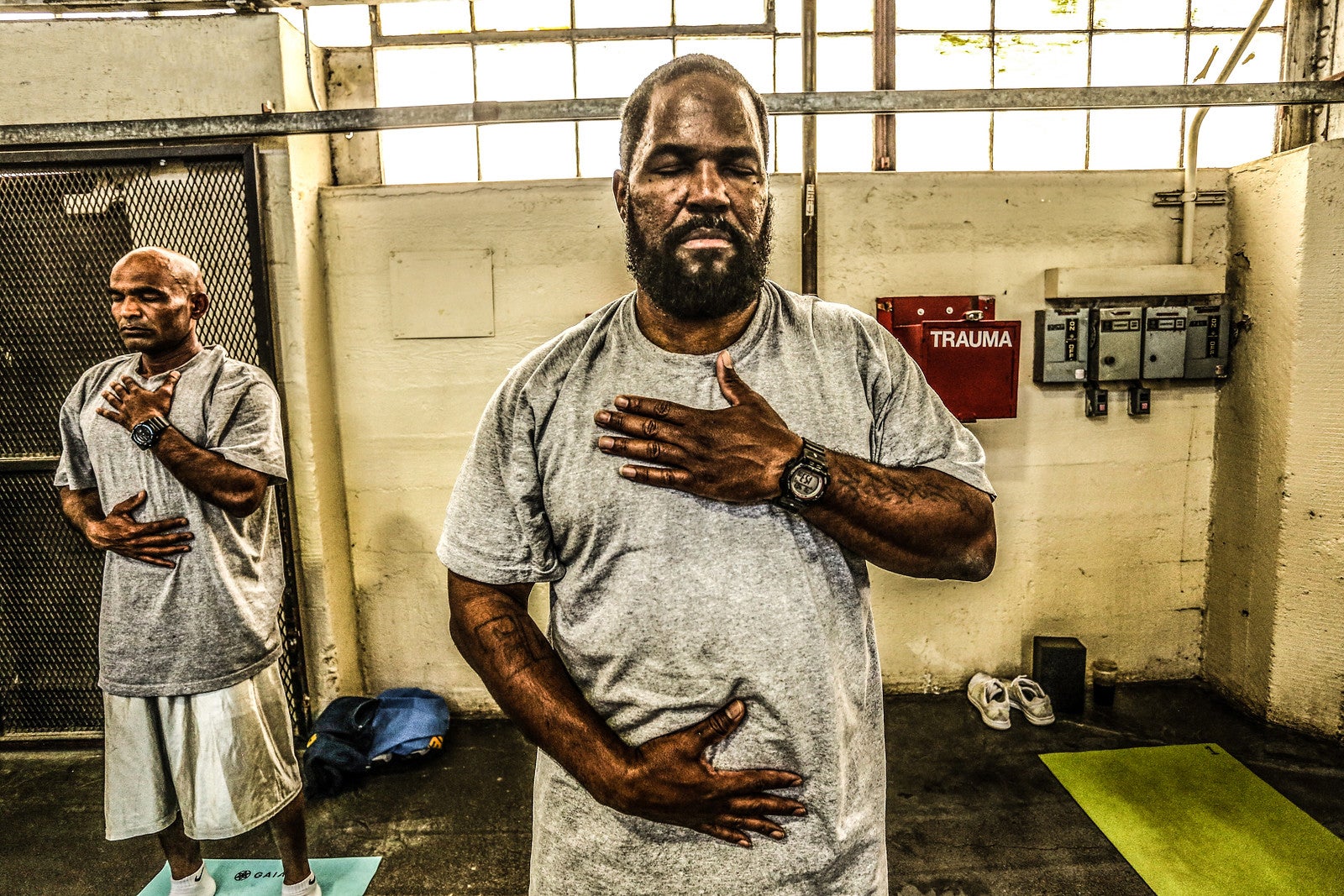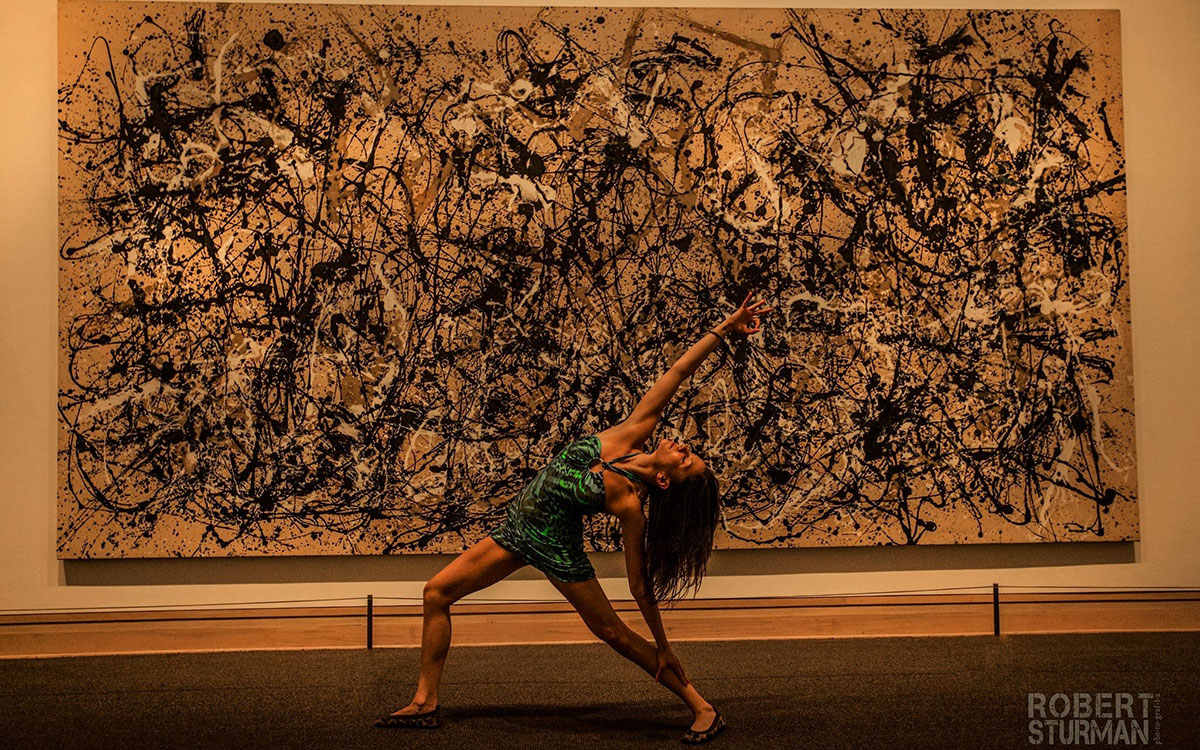The Camera as a Lens for Empathy

For Kripalu presenter Robert Sturman, the camera is a means for empathy. “The camera is such a powerful tool,” he says. “It’s an excuse to pay attention and see another.”
In his stunning portraits, Robert’s subjects practice asanas in disparate settings, from Manhattan to Mount Kilimanjaro to Marin County’s San Quentin Prison, where he photographed inmates in yoga class.
That session, Robert says, was about “paying attention to human beings who usually are not seen in a celebratory manner. The inmates would light up when they experienced how engaged I was in seeing them. They never see the images, they don’t have social media to share them, but they received the gift of being seen. We all want to be paid attention to, respected, honored—whether you’re a yoga practitioner on the cover of a magazine or an inmate serving a life sentence.”
 Yoga practitioners at San Quentin Prison; photo courtesy of Robert Sturman
Yoga practitioners at San Quentin Prison; photo courtesy of Robert Sturman
In his portraits, Robert relies on methods he learned in other disciplines. When he was 18, his uncle, a sculptor, encouraged him to learn how to draw. Drawing is the foundation of all art, his uncle believed. Robert enrolled in figure drawing classes at college and went on to study at an art academy.
Drawing was one of the hardest things he ever did, he recalls, and it didn’t come naturally to him—but he stuck with it, and learned how to “slow down and see,” he says.
“It trained me to pay attention to spatial relationships—for example, much of my work isolates the figure. Every limb has its own space in the composition, rarely crossing planes with objects behind it or with other body parts. This came directly from the painters I studied, who understood space and the relationship between the figure and the environment. The subject and the environment coexist. Both are main characters, never overpowering the other.”
Creating from a Place of Joy
The study of painting also influenced Robert’s emotional approach to the life of an artist. From early on, he wanted to create from a place of joy rather than a place of desperation, as so many of his heroes in the history of art had done. His favorite artists include Jackson Pollock, who taught him “responsible living,” by serving as an example of what not to do. The destructive, self-absorbed artist is a romantic cliché, but Robert subverts this notion.
“Because of Pollack, I decided to go to yoga,” Robert says. “At first, just because I had a hunch that it could teach me to live a more relaxed life by breathing mindfully, sitting still, not running, not feeling desperate.”
As a young artist, Robert developed an innovative technique using Polaroid film; he carved into the still-wet emulsion fluid on the photo paper to create works that one critic described as “as pure a fusion of painting and photography as exists anywhere.” But then Polaroid went out of business. “I had my palette taken away,” says Robert. During that time, he decided to dive into his yoga and meditation practice, and began to notice how beautiful the language of yoga was visually.
“I saw the whole history of art leading up to these expressions of asana, and I thought I might be able to use it,” he remembers. He continues to be “deeply in love” with the visual poetry of asana.
But What If I Can’t Draw?
I’ve long been fascinated by visual artists, from Pollock to Paul Gauguin. To fill a blank canvas with line and color, to find the right balance of light and shade, seems like wizardry to me. In fifth-grade art class, I tried to sketch a unicorn and stopped there. In college, I took Intro to Art History, an early-morning class in a dark cinema. Our professor posed questions: What triumphs and disappointments shaped the artists? Which historical events influenced their ideologies and methods? I took furious notes. Here was my way into art: through stories.
At museums, I like to read the wall descriptions first, hoping to find interesting phrases. At the Metropolitan Museum of Art, I happened upon a quote from Paul Gauguin: “Pure color! Everything must be sacrificed to it.” (True to his word, Gauguin painted in Polynesia while his wife and five children struggled in Denmark.) I wrote this down and a story emerged, one I’ve spent the past decade trying to unravel.
“I can appreciate artists’ work, whether they live up to their work as human beings or not,” Robert says. “I absolutely love the work of Paul Gauguin. But I’m very interested in what it means to be a well-rounded human being, well integrated and balanced. I would speculate that Gauguin could have traveled even further with his work if he had found integration.”
The Mind of the Subject
I wanted to speculate about Gauguin too, but for different reasons. I wanted to enter the mindset of the painter and consider his complicated choices. I hoped to embellish upon his imbalances. Is this also the yoga of seeing? Perhaps, if I can understand a character’s imperfect motivations, I can learn to accept my own.
“There’s a real education in paying attention, in seeing others,” says Robert. “You don’t even need a camera—it’s the eye contact, a way to acknowledge that they’re here on earth. The photo is the byproduct. The camera is the excuse in your hand to connect. And while I’m allowing my camera to tell the story of an individual, I’m also doing self-portraiture. Hopefully, I’m telling all of our stories through each person I have the honor of collaborating with.”
Robert directs me to a favorite quote from Michelangelo: “I saw the angel in the marble and carved until I set him free.”
I assume he means his way of uncovering a powerful image. But no, he’s talking about his personal practice. “That’s what we do with yoga—try to be better at being human,” he says. “So the quote from Michelangelo reminds me, I can be the work of art. The work of the artist is cherished, yet so many of us do not cherish our own sacred lives.”
Lara Tupper, MFA, is the author of two novels, Off Island and A Thousand and One Nights, and Amphibians, a linked short story collection forthcoming in 2021.
Full Bio and Programs